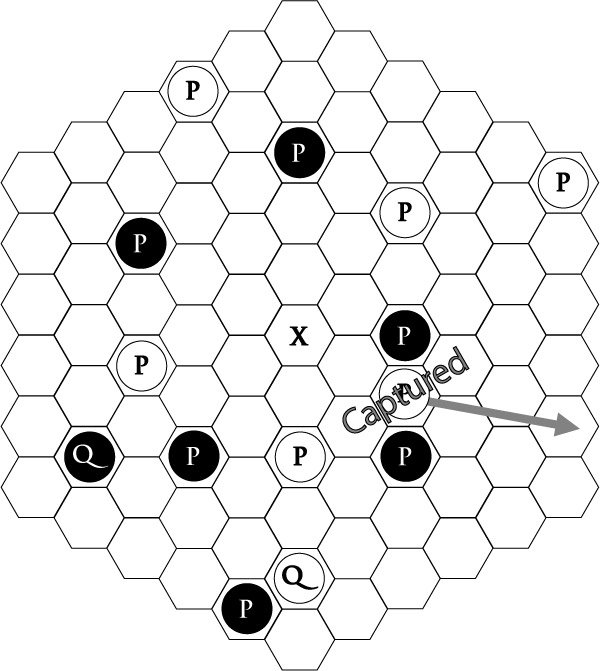Agon may be the oldest abstract strategy game played on a 6 by 6 by 6 hexagonally tiled board, first appearing as early as the late Eighteenth Century in France. The game reached it greatest popularity a hundred years later when the Victorians embraced it for its combination of simple moves and complex strategy.
The Pieces: Each player has one queen and six pawns a.k.a. guards placed in the pattern indicated below

The Objective: To place your queen in the center hexagon and surround her with all six of her guards.(below)


Moves: Think of the Agon board as a series of concentric circles (see above). Pieces can move one space at a time either in the same ring or the ring closer to the center. In the figure on the left, a piece on a hexagon marked 4 could move to an adjacent hexagon marked either 4 or 3. Only the queen is allowed to move into the center hexagon. The figure below shows possible moves.

Capturing: A piece is captured when there are two enemy pieces on either side of it. The player with the captured piece must use his or her next move to place the captured piece on the outside hexagon.

If the captured piece is a guard, the player whose piece was captured can choose where on the outer hex to place the piece. If the piece is a queen, the player who made the capture decides where the queen should go.
If more than one piece is captured in one turn, the player whose pieces were captured must move them one turn at a time.
If a player surrounds the center hexagon with guards without getting the queen into position, that player forfeits the game.
No comments:
Post a Comment